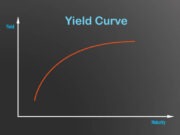
The terms “easement” and “encroachment” are often used interchangeably, but they mean very different things. Both terms are related to the use of land, and this can cause confusion for property owners and buyers. Understanding the differences between easements and encroachments is important because they can impact your property rights and even the value of your land. In this blog post, we’ll explore the differences between easements and encroachments and why it is important to know these differences.
What is an Easement?
An easement is a right that someone has to use a part of your land for a specific purpose. This right is usually granted by the property owner to another person or entity. Examples of easements include utilities that run through your property, a driveway that goes through a neighbor’s land, or a right-of-way that allows someone to cross your property to access another property. An easement is a legal right that is registered on the property’s title. Once an easement is granted, the person or entity who holds the right can continue to use it even if the ownership of the land changes hands.
What is an Encroachment?
An encroachment is when someone builds a structure or plants something on your land without your permission. Encroachments can be intentional or unintentional and can occur when someone is unaware of their property boundary. Common examples of encroachments include fences, trees, or buildings that extend onto your property. Encroachments are not legal rights and are not registered on the property’s title. When an encroachment occurs, it can be an infringement on your property rights.
How are Easements and Encroachments Different?
The main difference between easements and encroachments is that easements are legal rights, while encroachments are not. Easements are granted to allow someone to use part of your land for a specific purpose, while encroachments occur when someone uses your land without your permission. Easements are registered on the property’s title, while encroachments are not. Easements can be in place for an indefinite period, while encroachments can be removed through legal action.
What are the Consequences of Easements and Encroachments?
Easements and encroachments can both impact your property rights and the value of your land. An easement can limit your use of your property and affect the resale value of your land. An encroachment can also affect the resale value of your land, and if you are trying to sell your property, you may be required to disclose the encroachment to potential buyers. If you discover an encroachment on your property, you may need to take legal action to have it removed.
Conclusion:
In conclusion, easements and encroachments may seem similar, but they are legally and conceptually different. Knowing the differences between them will help you protect your property rights and ensure that you are aware of any potential limitations on the use of your land.
Always seek legal advice if you have any questions about easements or encroachments on your property, and be sure to disclose any information about easements or encroachments when selling your property. By having a clear understanding of these terms, you can make informed decisions about your property and avoid any legal disputes in the future.


































